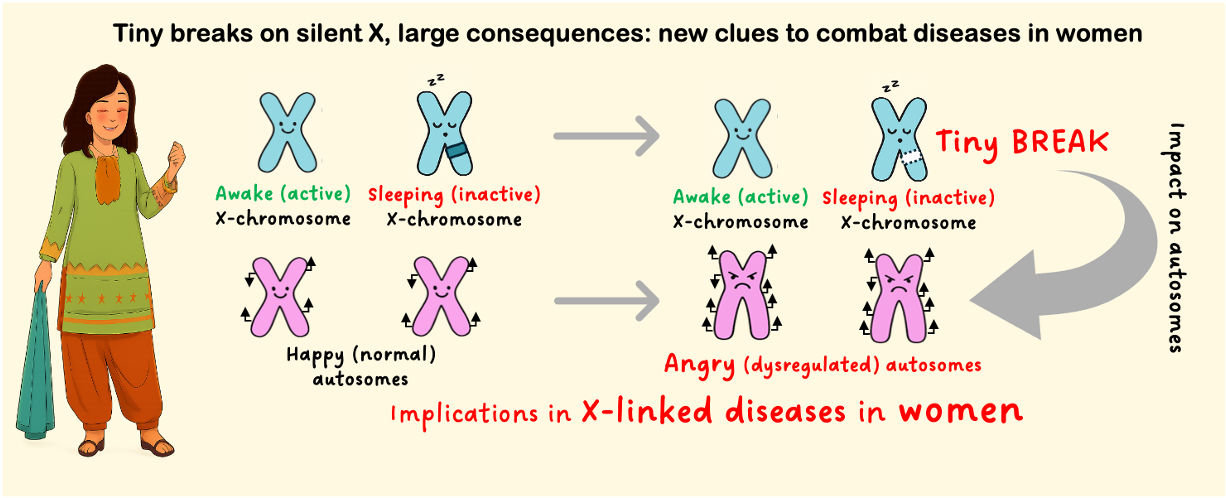Tiny breaks on silent X, large consequences
– Aryan Kumar and Prathyusha S
Women have two X chromosomes, contrary to men, who have only one. A phenomenon called X chromosome inactivation helps balance the dosage of the X chromosome in both sexes, by silencing one of the two female X chromosomes. Hence, both males and females typically have a single active X chromosome.
The X chromosome is involved in several female-biased and female-specific diseases, including deadly diseases such as cancer. Traditionally, the inactive X chromosome was considered biologically quiet – producing little RNA or protein (functional molecules of the cell), and thus thought to have minimal impact on cellular function. However, a new study led by Srimonta Gayen and his research team at the Department of Developmental Biology and Genetics, IISc, reveals that even though the inactive X is not functional, some tiny breaks on the silent X can still impact cellular functioning and potentially drive several diseases.

Image: Aryan Kumar and Prathyusha S. Woman in image generated using AI tools.
In the study, published in Genome Research, the authors used female mouse stem cells to understand the role of the inactive X chromosome. They deleted small chunks of the inactive X chromosome to see the resulting effect on the cell. To their surprise, even though the X chromosome remained inactive, the deletions led to a widespread dysregulation of several autosomal genes – those that are found on non-sex chromosomes.
This unexpected finding suggests that even though the X chromosome remains inactive, structural changes to it can ripple through the genome, potentially contributing to female-biased diseases, including certain types of cancer. Since chromosomal deletions are common in cancer, the study raises the possibility that damage to the inactive X may be a hidden driver of disease in women.
These insights open up new avenues for understanding how female-specific genetic mechanisms influence disease. They also offer a fresh perspective for researchers and clinicians investigating the roots of such conditions. Ultimately, this work brings us closer to unravelling the complex biology of diseases like cancer and finding ways to treat them more effectively.
REFERENCE:
Majumdar S, Bammidi LS, Naik HC, Manhas A, Baro R, Kalita A, Naskar AJ, Nidharshan S, Bariha GS, Notani D, Gayen S, Xist upstream deletion leads to dysregulation of Xist and autosomal gene expression, Genome Research (2025)
https://genome.cshlp.org/content/35/9/1992
LAB WEBSITE:
https://srimontasd.wixsite.com/gayen-lab




